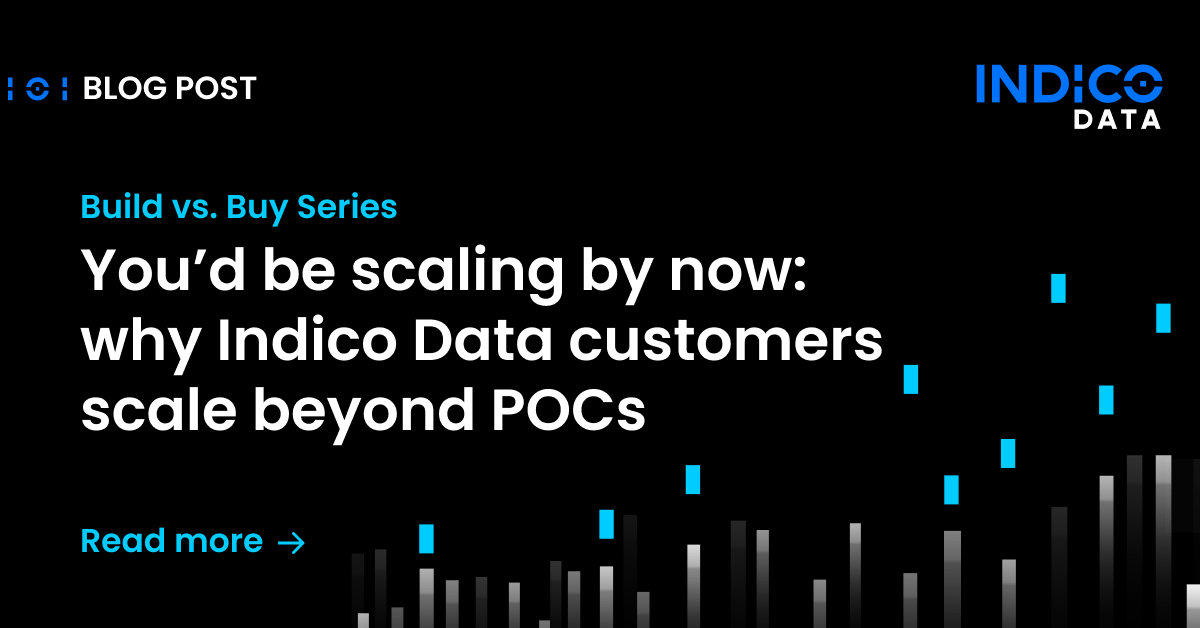If you want to demonstrate how effective intelligent document processing can be while simultaneously reducing the risk of time-consuming, expensive failures, adopt an agile development methodology.
That was one of the key takeaways from my recent conversation with Cristina Duta, PhD., Director of Intelligent Automation at AECOM, for the Unstructured Unlocked podcast. AECOM is a multinational, $13 billion infrastructure consulting firm with more than 50,000 employees, so it has no shortage of automation opportunities. Given that, we also discussed AECOM’s process for deciding which automation projects to pursue, as well as Duta’s thoughts on the overall maturity level of the intelligent automation field.
Listen to the full podcast here: Unstructured Unlocked episode 3 with Cristina Duta
Why agile is a good fit for automation projects
Duta has more than 5 years of experience in automation, going back to her time as a robotic process automation (RPA) technical lead with IBM. She’s also got significant software development experience, including a doctorate in computer science. That gives her the credibility to talk with authority about a topic I suspect many without her sort of background don’t fully understand: agile software development.
Agile is a highly flexible development model that can accommodate frequent changes of direction, including in response to feedback from stakeholders. That makes it a great fit for a young field like intelligent document processing, because feedback is crucial. If those who are intended to use an automation tool don’t find it effective – then it’s not effective.
“We are trying to show incremental value to the business,” Duta said. “It’s extremely important to show how the robot works for users to gain more knowledge and for them to interact with it, instead of waiting towards the end and saying, ‘This is the robot. Test it out and see how it works.’”
The agile process helps develop user buy-in along the way, not least by incorporating user feedback into the finished product. And at AECOM, Duta said agile also reduces the time it takes to deliver automation projects. Even complex projects take only about 3 months, while simple ones may take only a month. In my book, that’s a rapid time to value.
Related content: How intelligent document processing helps address the ambiguity in automation efforts
Towards a federated COE
The way AECOM defines complexity gets back to its automation center of excellence (COE), which I would (and did) describe as quite mature. It defines projects on a scale of complexity, from simple; medium to medium-high; and high.
The simple projects are often quick wins, like someone looking to automate routine emails they have to send on a daily basis. Such simple cases will likely be handled by end users themselves, using tools that enable them to develop their own automation models – so-called citizen developers.
“We like people to actually be able to work on real use cases.” Duta said. “We give them a pool of opportunities.”
Remaining projects are prioritized with business leadership teams. Projects are evaluated to assess ROI, which strategic objectives they align with and in what timeframe, whether it’s short-term or 2-3 years off. Those more complex projects fall under the purview of the COE, where they are subject to the oversight, governance and maintenance capabilities it can bring to bear.
This approach leads to the federation of the COE as its governance functions become embedded in the culture of the company. Over time, it becomes easier to migrate functions out of a centralized COE and have more citizen developers doing automation. “Too many opportunities remain untapped unless you try this approach,” Duta said.
Related content: Unstructured Unlocked podcast episode #1: more reasons AI projects fail and how to ensure yours don’t
Intelligent automation: a maturing industry
Having such a sound methodology in place is a sign of the maturity of the automation industry.
“There’s been a great evolution in the last 2 years,” she said. “Everybody is growing to that space where governance, procedure and delivery methodologies are in place and they have a clear vision of what they want to achieve in 1, 2 or 3-year terms. That’s very important.”
Another sign of automation maturity is the diversity in available tools. “Everybody is realizing there is not one solution that fits every problem … and not one technology that’s going to be only for their particular industry,” she said. “Five years back, we had three main RPA vendors and everybody was using them.”
Having a variety of tools to choose from enables COEs to try out different options, assess how well they integrate with other required applications, how well they scale and whether they can evolve over time.
Performance tools have likewise evolved in the last few years, with data analytics dashboards such as Tableau that enable companies to understand actual performance vs. their original estimates, for example. That helps companies assess whether automation investments are paying off, a capability that will only get more important as companies seek to address projects involving unstructured data.
Duta had plenty to say about her experiences with unstructured data as well, which I’ll detail in a future installment. If you just can’t wait, check out our conversation now.
Check out the full Unstructured Unlocked podcast on your favorite platform, including:
Read the full transcript of the podcast here.


